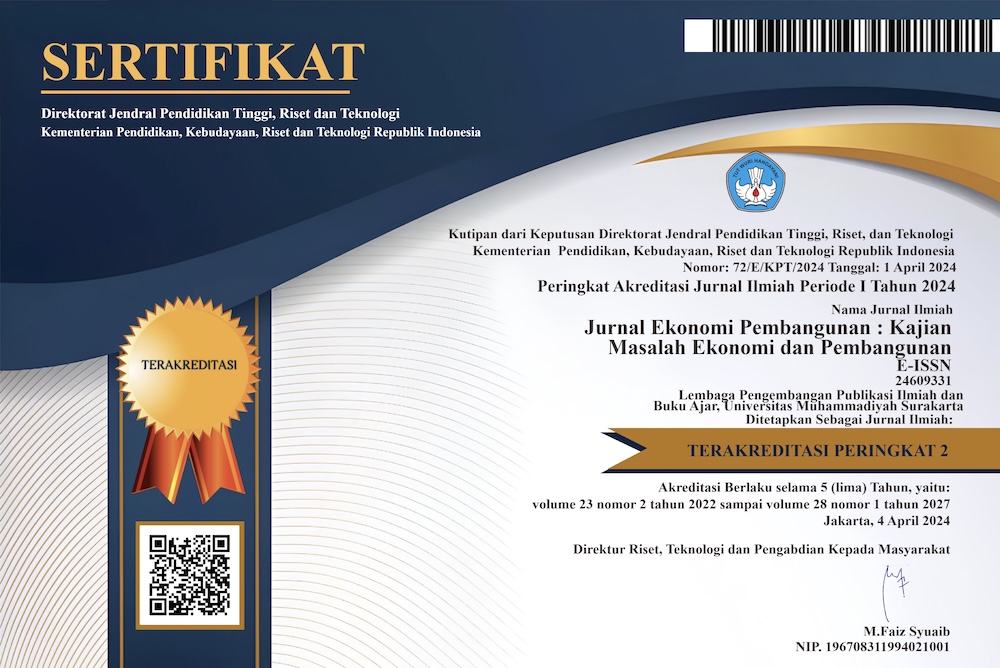How Capital, Labor, and Technology Influence Java’s Economic Growth
DOI:
https://doi.org/10.23917/jep.v23i2.18278Keywords:
Economic Growth, real GDP, Capital, Labor, TechnologyAbstract
Indonesia is a developing country with a relatively stable economy, as can be seen in Indonesia’s real GDP per capita, which tends to increase before the Covid-19 pandemic. However, there is a disparity in economic growth between Java and outside Java. During the 2010-2020 period, Java’s economic growth reached 61.9%, while outside Java was only 48.5%. According to the Solow Model theory, three factors can influence economic growth: capital, labor, and technology. Therefore, this study aims to determine the effect of capital, labor, and technology on economic growth in Java. This research was conducted using two approaches, namely generalized least square (GLS) and mixed-effect regression model (MEM). Both methods show the same result that capital and labor have a significant positive effect on the real GRDP of the provinces in Java. In contrast, technology has an insignificant effect on the real GRDP of the provinces in Java. This study also found significant random effects among provinces in Java for the number of workers and capital, but not on technology.















